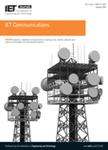版权所有:内蒙古大学图书馆 技术提供:维普资讯• 智图
内蒙古自治区呼和浩特市赛罕区大学西街235号 邮编: 010021

作者机构:Univ Elect Sci & Technol China Sch Comp Sci & Engn Sch Cyber Secur Chengdu Sichuan Peoples R China
出 版 物:《IET COMMUNICATIONS》 (IET Commun.)
年 卷 期:2025年第19卷第1期
核心收录:
基 金:National Natural Science Foundation of China 62372085 62376055 62276053
主 题:artificial intelligence clustering analysis data overlapping Internet of Things on-edge computing wireless communication
摘 要:Advanced wireless communication is important in distribution systems for sharing information among Internet of Things (IoT) edges. Artificial intelligence (AI) analyzed the generated IoT data to make these decisions, ensuring efficient and effective operations. These technologies face significant security challenges, such as eavesdropping and adversarial attacks. Recent studies addressed this issue by using clustering analysis (CA) to uncover hidden patterns to provide AI models with clear interpretations. The high volume of overlapped samples in IoT data affects partitioning, interpretation, and reliability of CAs. Recent CA models have integrated machine learning techniques to address these issues, but struggle in the limited resources of IoT environments. These challenges are addressed by proposing a novel unsupervised lightweight distance clustering (DC) model based on data separation (beta$\beta$). beta$\beta$ raises the tension between samples using cannot-link relations to separate the overlap, thus DC provides the interpretations. The optimal time and space complexity enables DC-beta$\beta$ to be implemented on on-edge computing, reducing data transmission overhead, and improving the robustness of the AI-IoT application. Extensive experiments were conducted across various datasets under different circumstances. The results show that the data separated by beta$\beta$ improved the efficiency of the proposed solution, with DC outperforming the baseline model.